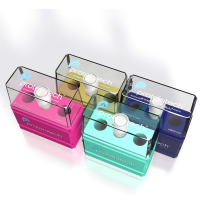Transfecting Suspension Cells(悬浮细胞转染)
互联网
实验概要
将转移基因整合到细胞染色体DNA上,形成稳定表达转移基因的细胞系。
实验原理
细胞转染技术是目前广泛应用于病毒基因结构与功能以及基因调控等的研究。细胞转染可分为短暂转染和稳定(或永久)转染两种。在短暂转染中,被转染基因并不整合至细胞染色体中,因而不能随细胞分裂而传代。转入病毒基因的转录或复制可在DNA导入后1~4天通过收集被转染的细胞进行分析。如果病毒基因整合至细胞染色体中则可随细胞分裂而传代,就能产生稳定或永久转染的细胞系。
实验步骤
1.The day before transfection, determine the number of cells needed for transfection. For each 30 ml transfection, you will need 3 × 10 7
cells in 28 ml of FreeStyle™ 293 Expression Medium. Expand cells accordingly, taking into account the cell doubling time. For FreeStyle™ 293-F cells, this equates to passing cells at ~6–7 × 10 5
cells/ml.
2.On the day of transfection, determine the viability and the amount of cell clumping from a small aliquot of cells using the trypan blue dye exclusion method. Vigorously vortex for 45 seconds to break up cell clumps and determine total cell counts using a Coulter Counter or a hemacytometer. Viability of cells must be over 90%.
Important:
For best results, make sure to have a single cell suspension. It may be necessary to vortex the cells vigorously for 10 to 30 seconds to break up cell clumps.
3.Calculate the volume of cell suspension containing the number of cells needed for one transfection (you will need 3 × 10 7
cells for each 30 ml transfection). Place the shaker flask containing cells in a 37°C incubator on an orbital shaker.
4.For each transfection sample, prepare lipid-DNA complexes by performing
the following:
1)Dilute 30 μg of plasmid DNA in Opti-MEM® I to a total volume of 1 ml. Mix gently.
2)Dilute 60 μl of 293fectin™ in Opti-MEM® I to a total volume of 1 ml. Mix gently and incubate for 5 minutes at room temperature.
Note:
Longer incubation times may result in decreased activity.
3)After the 5 minute incubation, add the diluted DNA to the diluted 293fectin™ to obtain a total volume of 2 ml. Mix gently.
4)Incubate for 20–30 minutes at room temperature to allow the DNA- 293fectin™ complexes to form.
5.While the DNA-293fectin™ complexes are incubating, remove the cell suspension from the incubator and add the appropriate volume of cell suspension (see step 3) into a sterile, disposable 125 ml Erlenmeyer shaker flask. Add fresh, pre-warmed FreeStyle™ 293 Expression Medium to a total volume of 28 ml for each 30 ml transfection.
6.After the DNA-293fectin™ incubation is complete, add the 2 ml of DNA-293fectin™ complex (from step 4) to each shaker flask containing the cell suspension. To the negative control flask, add 2 ml of Opti-MEM® I instead of DNA-293fectin™ complex. Each flask should have a total volume of 30 ml, and contain approximately 1 × 10 6
viable cells per ml.
7.Incubate the cells in a 37°C incubator with a humidified atmosphere of 8% CO 2
in air on an orbital shaker rotating at 125 rpm.
8.Harvest cells or media (if recombinant protein is secreted) at approximately 48 hours post-transfection and assay for recombinant protein expression.








